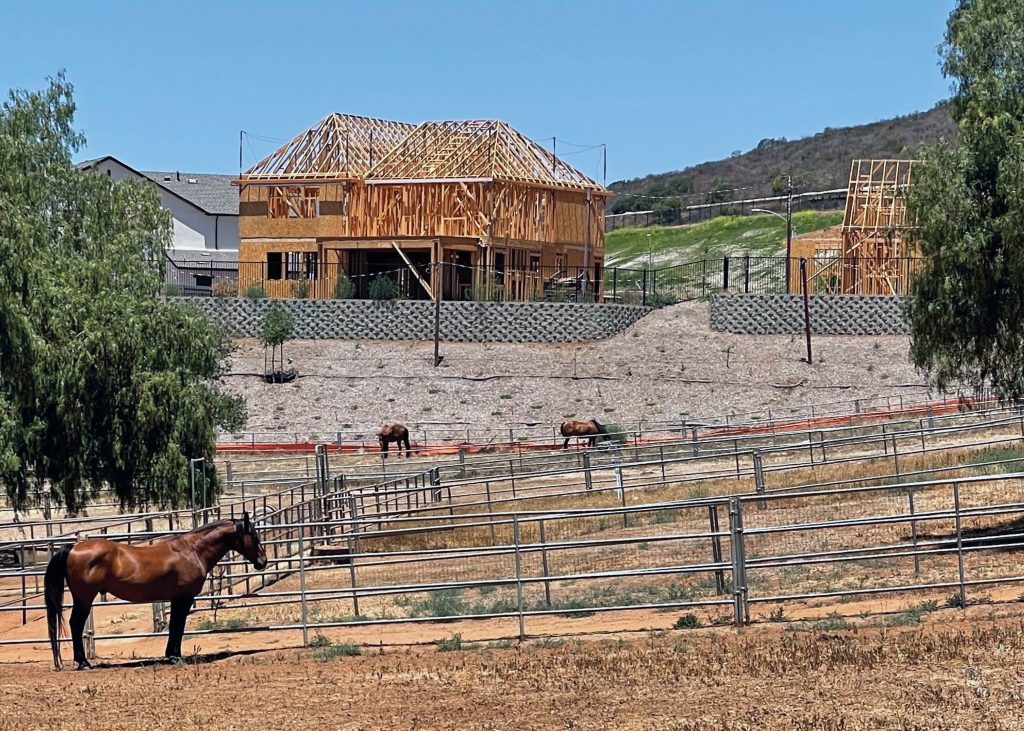By Christine Hughes / courtesy of ELCR.org
There are so many layers to consider when determining if horses are considered livestock and if horse farms are considered agricultural uses. Here are a few things to consider if you are facing local challenges to your equine operations, especially if your local or state regulations leave you in a grey area.
Starting at the most local level, how does your local zoning ordinance define horses and related uses? Is your operation defined in a local code or policy as an agricultural use, and horses as livestock? Does your property meet any minimum land area or number of animals that sets a threshold for what is considered an agricultural use? Is the county taxing your land as farm or agricultural use?
If local codes do not address these issues, you may need to dig a little deeper. In the United States, horses have traditionally been considered livestock. While many of us enjoy horses for recreational purposes, the raising and keeping of horses is an agricultural endeavor that promotes the preservation of green space in a way that the raising and keeping of companion animals does not. This is especially critical in urbanizing areas where land values may be on the rise and demand for land for nonagricultural uses is high.

Has another agency designed your property or business as a farm or agricultural operation? Sometimes this can trump local land use regulations. If your state has defined horses as livestock or even what constitutes an agricultural use, this will come into play with your local land use regulations. Some states even exempt agricultural uses from some local zoning authority and building code sections. Ideally, the local zoning code is already aligned with state statutes, but it never hurts to verify this. If you were able to take advantage of special building permit waivers or site plan review considerations for agricultural buildings, sites, and structures, this would also support the idea that your horse land is an agricultural use. All 50 states have “right to farm” laws that protect qualified farmers and agricultural uses in some way. Find out what your state says about right to farm communities.
Some equine operations very clearly fall within the USDA’s definition of a farm, which is “any place from which $1,000 or more of agricultural products were produced and sold, or normally would have been sold, during the year.” Smaller equine operations, where services such as riding lessons, but not tangible products, may be sold might be thought of as recreational use, but may still fall within this definition of farm.
It is very clear that the federal government defines horses as livestock. The United States Code defines “agricultural products” as “agricultural, horticultural, vinicultural, and dairy products, livestock, and the products thereof…” and defines livestock as “…cattle, elk, reindeer, bison, horses, deer, sheep, goats, swine, poultry (including egg-producing poultry), llamas, alpacas, live fish, crawfish, and other animals that— (A) are part of a foundation herd (including producing dairy cattle) or offspring…” (7 USC§ 1471(2)). Once you have established that your land and the use of it is an agricultural use, it is important to understand what zoning is currently applied to the property versus what zoning district is proposed.
Zoning is unique to each local government, but most likely, all or part of the land within its jurisdiction is divided into zoning districts, with land use and land development regulated within each district. It is possible that equine land uses are permitted in multiple zoning districts. It is also possible that it is not addressed at all.
Be sure to learn about the regulations relating to keeping horses, including the definition of livestock (and related terms), what uses, exactly, are permitted and how they are permitted (is keeping horses allowed by right or is a special use permit required?), any horse density requirements, and any site development requirements (e.g., setbacks for buildings and structures, separation requirements from waterways). Pay close attention to the permitted uses – if you’re operating a boarding and lesson barn, and horses for personal use are permitted in the proposed zoning district, but not as a business operation, that is a red flag. It is entirely possible that the anticipated rezoning would have little or no impact on your land if the regulations for the proposed district are similar to or more horse-friendly than your current zoning district regulations.

In considering a rezoning, it will be important to also understand the adopted long-range plans and policies for your property or general area. Perhaps there are adopted rural preservation policies, open space, or limited growth policies in place that support keeping agricultural uses in place. Or perhaps an adopted plan targets the area for redevelopment or higher density development. In a few states, consistency between zoning actions and adopted plans is required; either way, basing a rezoning action on adopted policies is a best practice.
If your local code does not include a definition of livestock that is close to the United States Code or perhaps lacks a horse-friendly zoning district, consider petitioning your local government for a code change. You can help write regulations that are more horse friendly! If there are no long-range plans that speak to open space and farmland preservation, consider starting a grassroots effort to get such plans adopted.
If you are faced with fighting a rezoning of your property or property in your area, it will be important to understand these nuances. It will also be important to know why rezoning is proposed, and what, if any, long-range policy recommendations are at play. It will be critical to organize your equine network to advocate against an unwanted change. If new development is on the horizon, rezoning pressure is unlikely to go away, even after an initial denial or withdrawal of a proposal.
If a rezoning is proposed, it is likely to be an ongoing process, especially in areas where population is on the rise and growth pressures are strong. An organized advocacy network, regular education and communication to your elected officials about the economic, recreation, and public health benefits of horses to your community, and an active role in policy development will be important. Anytime you find yourself preparing for public rezoning hearings, it will be critical to map out for the decision makers the benefits of keeping agricultural lands in agricultural use and the excepted negative impacts of a zoning and land use change.
MORE ONLINE:
“Zoning Guide for Horse Friendly Communities”
https://bit.ly/ZoningGuide
“Zoning Change Checklist”
https://bit.ly/ELCRzoningworksheet
About the author: Christine Hughes is a horsewoman and a senior planner overseeing the long-range, environmental, and special projects who has worked extensively with community groups developing small-area, corridor, and comprehensive plans. Christine is a member of the American Planning Association, the American Institute of Certified Planners and the Equine Land Conservation Resource Advisory Council. Christine received a bachelor’s degree in political studies from Meredith College in Raleigh, N.C., and a Master of Historic Preservation from The University of Georgia.
To learn more about horse-friendly zoning practices, check out Horse-friendly Zoning Practices and Planning and Zoning Guide for Horse Friendly Communities. And for examples about advocating against a proposed rezoning, Advocating for Success: Protecting the Riverside Rancho Equestrian Community of Glendale, California
Leave a Comment
All fields must be filled in to leave a message.